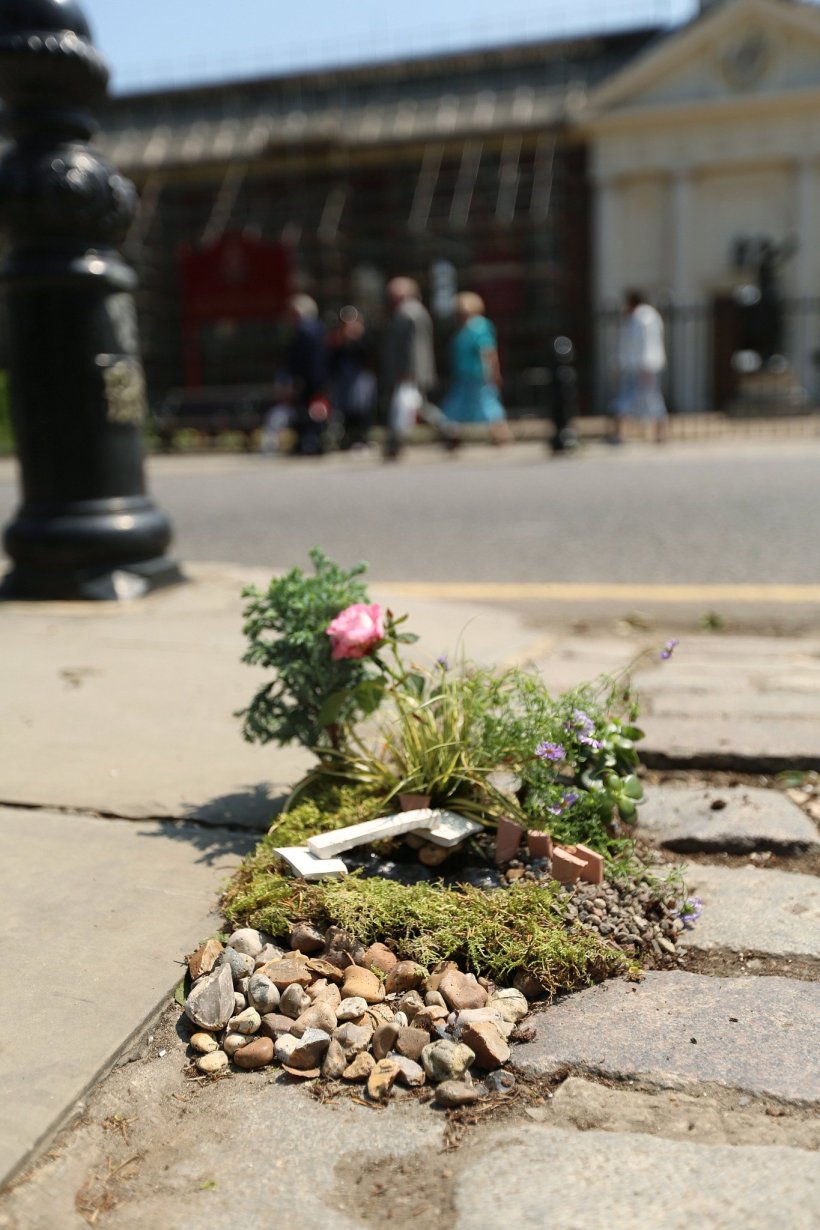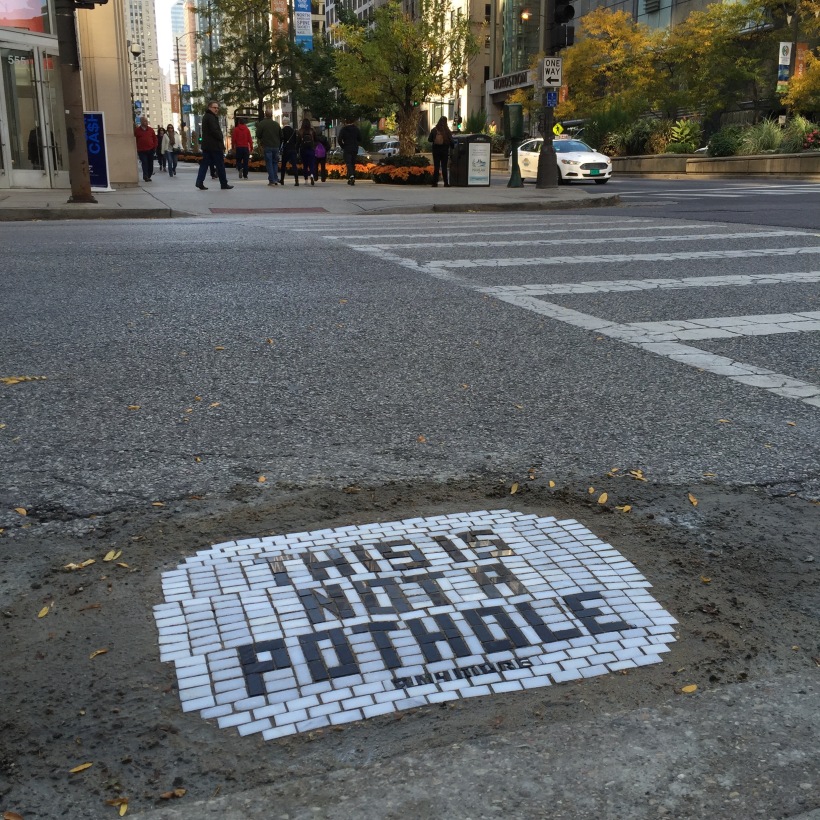Made by constant use and wear of roads. They break the flow of the road. They disrupt its transitional character create a local perturbation. Whereas most of us see ugly, hazardous hollows in the smoothness of the asphalt, some have seen potholes as possibilities. Davide Luciano, for instance, an NYC photographer, has created a series of photographs in which he plays with water and other substances, filling the potholes and creating familiar scenarios in the unfamiliar setting of the road. Jim Bachor fills the potholes, a contemporary problem, with the ancient, creating mosaics of food items, flowers, or messages in the streets of Chicago and in other parts of the world. Steve Wheen uses potholes in footpaths to interrupt the ‘greyness of London’ through creating little gardens within them, in what he calls acts of ‘guerrilla gardening’.


While some artists fill the gaps with their creations, some have used theirs to get the local or state administration to repair the potholes. Baadal Nanjundaswamy placed a life-size crocodile statue in a large pothole in Bangalore, causing the administration to cover the hole as a response to the installation’s popularity. Street artists in Russia have taken to drawing caricatures of local politicians around potholes in an attempt to draw attention the poor state of the roads, while a Mancunian counterpart has resorted to the cruder, but very efficient solution of adorning potholes with drawings of penises. In Thailand, a model started a national trend in which women went out in the streets and bathed in the generous space offered by the potholes. Finally, a Portland anarchist group has seen the holes in the roads as an opportunity to prove that grassroots action is always more efficient than top-down administration, filling the potholes themselves.
Potholes, thus, could be a lack that forces us to give attention. They could become intensely politicised: they are drawn around, planted flowers in, or have swearwords written around them. They not only draw attention to the place itself, but to the incapacities to address flaws. Even when fixed, they leave patches, ‘scars’ on the road, but, as the artists above show, instead of simply being repaired, they can be used to leave much more creative traces.
Andrei Belibou (Department of Politics and International Studies, University of Warwick)
Links to artwork mentioned:
- Davide Luciano – http://www.mypotholes.com/
- Jim Bachor – http://www.bachor.com/pothole-installations-c1g1y
- Steve Wheen – https://thepotholegardener.com/
- Banal Nanjundaswamy – http://www.huffingtonpost.in/2015/06/19/bangalore-crocodile_n_7619254.html
- Potholes in Russia – https://www.theguardian.com/world/2015/jun/19/russia-pothole-portraits-activists-banksy
- Potholes in Manchester – http://www.bbc.co.uk/newsbeat/article/32448103/mystery-artist-highlights-bury-potholes-with-penis-drawings
- Potholes in Thailand – http://www.bbc.com/news/blogs-trending-37485461
- Portland – http://theantimedia.org/anarchists-build-roads-fix-potholes/
Reblogged this on Aya's Margins and commented:
The first blog post by Andrei Belibou, on our holes project. Andrei surveys several art projects that encounter potholes and react creatively to the minor urban disruptions they enact in an urban ambition of smoothness and seamlessness.
LikeLike
Reblogged this on Elemental Geography and commented:
A great first blog post by one of my students, Andrei Belibou, on our holes project. The objective of these posts is to cover a specific hole in every post (bullet holes, black holes, etc.). This post surveys, as Aya points out, “several art projects that encounter potholes and react creatively to the minor urban disruptions they enact in an urban ambition of smoothness and seamlessness.”
LikeLike